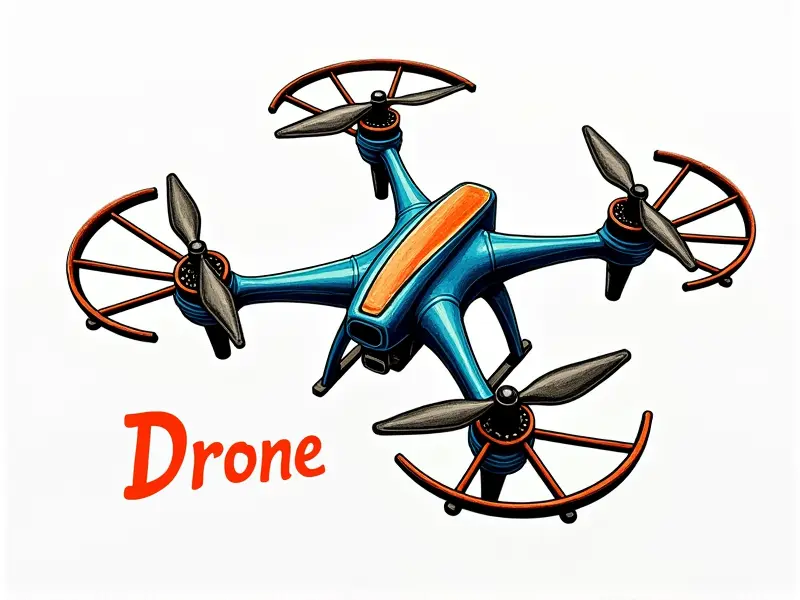What is motor KV rating?

Understanding Motor KV Ratings
Motor KV ratings are a critical aspect when it comes to selecting the right electric motor for your RC (Radio Controlled) vehicle or drone. This article delves into what KV means in the context of motors, how to interpret KV values, and why this rating is so important for performance.
Understanding Motor KV Ratings
The term "KV" refers to the RPM (Revolutions Per Minute) per volt that a motor will spin at when no load is applied. Essentially, it's a measure of how fast a motor can turn relative to the voltage supplied. A higher KV rating means the motor spins faster for a given voltage.
Decoding RC Motor KV Rating
In the context of RC motors, KV ratings are crucial because they directly influence the speed and torque characteristics of the motor. Understanding how to decode these ratings is essential for optimizing performance in various applications such as drones, cars, boats, and planes.
The Importance of KV Rating in Motors
Choosing the right KV rating is vital for achieving optimal performance in your RC vehicle or drone. A higher KV motor will spin faster but with less torque, while a lower KV motor offers more torque at the expense of speed. This balance is crucial depending on whether you prioritize acceleration and maneuverability over sustained high speeds.
How to Read KV Ratings on Motors
To read KV ratings on motors, look for a number followed by "KV" or simply "K". For example, 1000KV means the motor will spin at 1000 RPM per volt. This rating is typically found on the motor's label or in its specifications.
Why KV Matters for Performance
The KV value of a motor significantly impacts performance parameters such as acceleration, top speed, and efficiency. A higher KV motor will accelerate faster but may struggle to maintain high speeds under load, while a lower KV motor provides better sustained power at the cost of initial acceleration.
Impact on Acceleration
A higher KV rating means quicker acceleration due to increased RPM per volt. This is beneficial for applications requiring rapid response and quick bursts of speed.
Effect on Top Speed
Motors with a high KV value can reach higher top speeds because they spin faster at lower voltage levels, making them ideal for racing or other high-speed scenarios.
Choosing the Right KV Rating
Selecting the appropriate KV rating depends on your specific needs. For instance, if you're building a drone that requires quick takeoffs and agile maneuverability, a higher KV motor might be preferable. Conversely, if sustained flight time is more important than speed, a lower KV motor would be better suited.
Basics of KV Rating for Beginners
For beginners in the RC hobby, understanding basic principles about KV ratings can help make informed decisions when choosing motors. Start by considering your vehicle's intended use and performance requirements to narrow down suitable KV ranges.
Understanding Torque vs Speed Trade-off
A key concept is recognizing that higher KV motors offer less torque but more speed, whereas lower KV motors provide greater torque at the expense of top RPM. Balancing these factors based on your application needs is crucial.
Explaining KV Values for RC Motors
KV values are specific to each motor model and indicate its rotational characteristics under different voltage conditions. By understanding how KV affects performance, you can better match motors to their intended use cases.
Matching KV with Battery Voltage
The interaction between KV rating and battery voltage determines the actual RPM of your motor in operation. Higher voltage batteries paired with high KV motors yield faster speeds but may reduce efficiency.
Impact of KV on Performance
The impact of KV ratings extends beyond just speed; it also influences factors like power consumption, heat generation, and overall system efficiency. Proper selection ensures optimal performance tailored to your RC project's demands.
Efficiency Considerations
A well-chosen KV rating can enhance motor efficiency by minimizing unnecessary energy loss through excessive RPM or insufficient torque output under load conditions.
Beginner's Guide to Motor KV
This guide aims to demystify the concept of motor KV ratings for newcomers to RC hobbies. By grasping these fundamentals, beginners can start making smarter choices about their equipment and achieve better results from their projects.
Key Takeaways for Beginners
- Understand the basics: Learn what KV means and how it affects motor performance.
- Consider your application: Think about whether you need speed, torque, or a balance of both.
- Experiment with different setups: Try out various KV ratings to see which works best for your specific needs.
Maximizing Flight Time with KV Rating
To maximize flight time in RC drones, selecting an appropriate KV rating is crucial. A lower KV motor paired with a high-capacity battery can provide longer endurance by optimizing power usage and reducing unnecessary RPM under load conditions.
Tips for Maximizing Endurance
- Optimize Motor-Electronics Match: Ensure your ESC (Electronic Speed Controller) is compatible with the chosen KV rating to avoid inefficiencies.
- Select Appropriate Battery Capacity: Use batteries that offer sufficient capacity while maintaining a good power-to-weight ratio for extended flight times.
Conclusion
Motor KV ratings play a pivotal role in determining the performance and efficiency of RC vehicles and drones. By understanding how to interpret these values, you can make informed decisions about motor selection that align with your specific needs and goals. Whether you're prioritizing speed, torque, or endurance, choosing the right KV rating is key to achieving optimal results.

